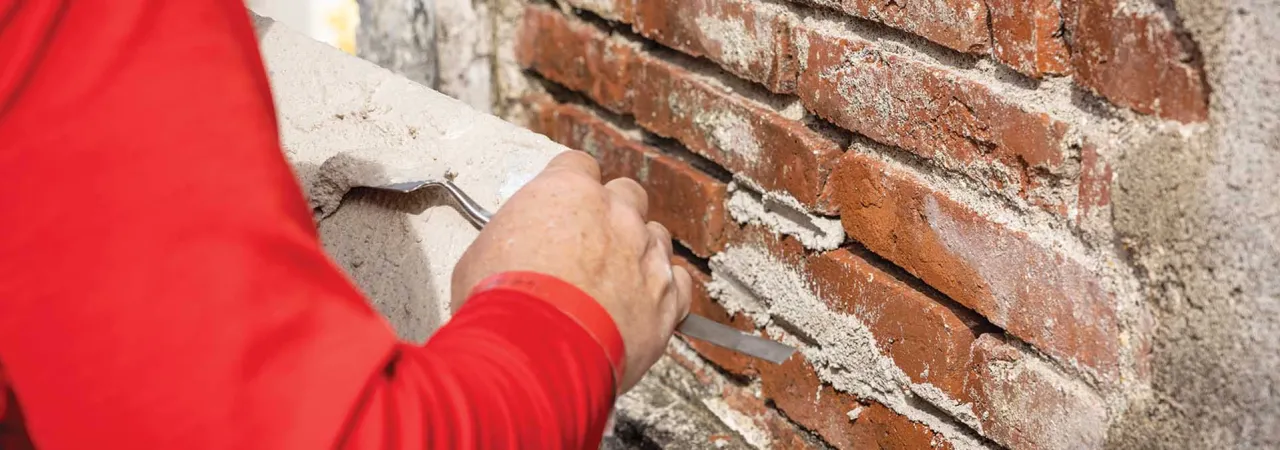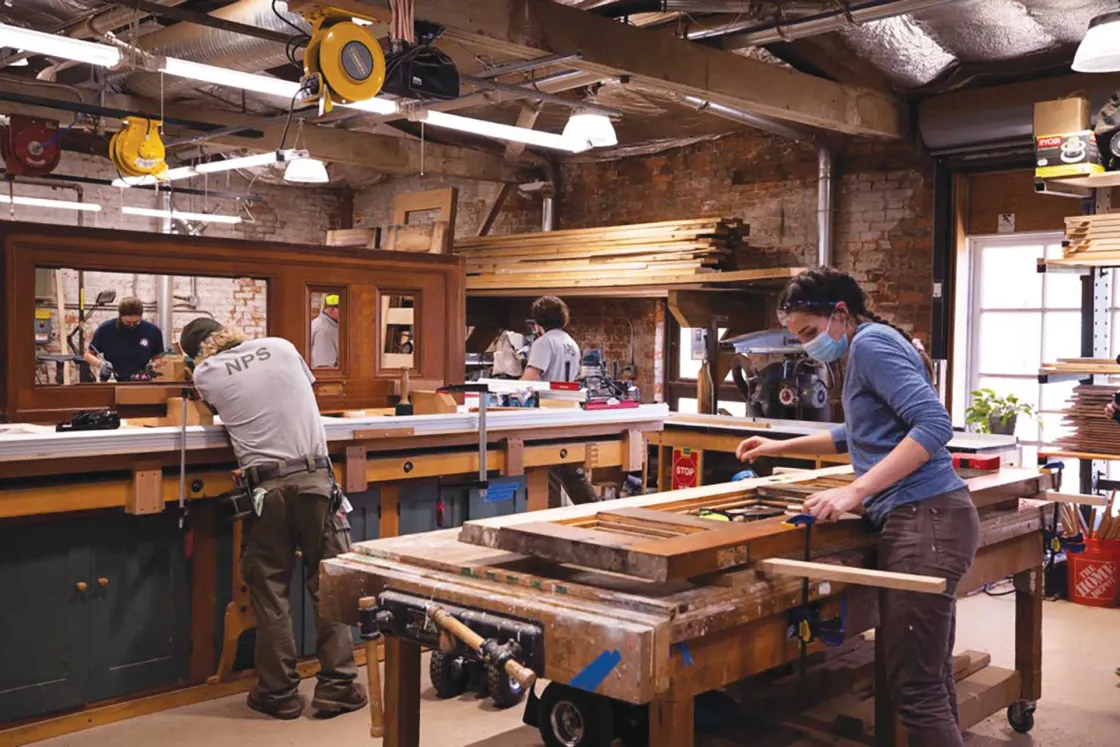Profiles in Preservation: The Campaign for Historic Trades

What would Antietam Battlefield be without the Dunker Church? Manassas Battlefield without the Stone House? Gettysburg without Lee’s Headquarters?
The preservation of a battlefield is a far greater task than merely staving off its paving over or the development of modern structures on its land; it also requires the preservation of its historical structures, many of which have become iconic placeholders and important storytellers of the history that occurred where they stand.
But historical structures need specialized care, and the number of qualified craftworkers skilled in the trades to perform this work has been in decline for decades. To fill this shortfall, in 2019, Preservation Maryland and the National Park Service’s Historic Preservation Training Center partnered to launch the Campaign for Historic Trades.
“One of the challenges with our restoration trades and work being done to save historic structures is that there are few apprenticeships aligned to those. If you want to become a carpenter, there’s a pathway for that, but if you want to become a restoration carpenter or a preservation carpenter, there’s no registered apprenticeship for that,” says Nicholas Redding, executive director of Preservation Maryland. “We’re now in the process in the Campaign of building out registered apprenticeships with the U.S. Department of Labor so that if somebody wants to become a window technician and restore historic windows, there’s a clear pathway to doing that.”

Established in 1977, the Historic Preservation Training Center uses historic preservation projects within the national parks or at partner facilities as vehicles for teaching preservation philosophy and building crafts, technology and project management skills. The Center also develops educational courses that fulfill the competency requirements of service employees in the career fields of historic preservation skills, risk management, maintenance, and planning, design and construction.
While the Campaign was launched to expand the Center’s apprenticeship program, it has since grown to include identifying ways to increase access to the trades. The Campaign’s goals are to:
- Register apprenticeships with the U.S. Department of Labor and state labor offices.
- Create open education training resources available online in English and Spanish.
- Work with stakeholders to support preservation trades programs, associations and businesses.
- Develop statewide and national historic trades training opportunities that are accessible to all.
- Promote and recruit for the National Park Service’s preservation and trades programs.
- Advocate for historic trades training.
- Lead the national movement to strengthen and expand historic trades careers.
In 2021, the Campaign commissioned a landmark analysis of the historic trades labor force in the United States. This first-of-its-kind labor analysis sought to identify how many people are working in the field and how many jobs and how many new entrants into the field are needed.
“That number is huge,” Redding says. “We need over 10,000 people a year entering the field of historic trades to keep at par nationally with where we are at right now.”
People think of historic trades when they go to a battlefield and see a historic structure, Redding says, “But it impacts places on main streets, too. It impacts the places where we go and eat while visiting Gettysburg or Antietam.”
He adds, “The structures on the battlefields are not only evocative today, but they [also] were landmarks upon which commanders made decisions and certainly landmarks upon which people remember the battlefield. They certainly remember the white house or the red barn. They are critically important.”
The National Park Service and the National Preservation Training Center work to train individuals at park units, like Gettysburg, Antietam and the C&O Canal, and through these training program they have worked on and touched numerous historic structures on these battlefields.
“A really good example of that and illustrative of how powerful it can be within the public’s mind is Lee’s Headquarters at Gettysburg,” Redding says. “Lee’s Headquarters would not be the story that it is were it not for the structure itself and the opportunity to feel or put your hands on a place.”
Preservation requires eternal vigilance,” Redding says, adding that the buildings can be one of the more challenging aspects of battlefield preservation.
“The preservation of the structures requires a lot of engagement and long-term support and making sure the hands are there to do the work,” he says. “Restoration without the hands to do it is just good intentions.”





